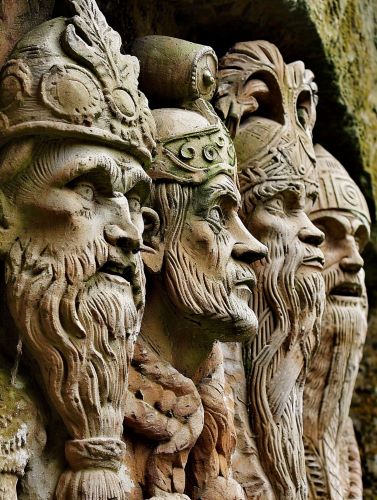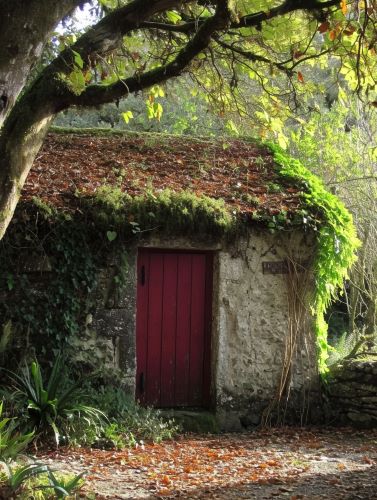
Languages
in WritingsThe Essence of Language
Language, in its multifaceted forms, is the cornerstone of communication, a reflection of its diverse cultures, histories, and philosophies. It is not merely a tool for communication but a living, breathing aspect of identity that molds and shapes the very society it echoes.Spelling and Phonology: The Sounds of Culture
The spelling and phonology of each language are mirrors to their respective societies' values and environments. The way words are formed and pronounced can tell a traveler much about a region's history, its influences, and its relationship with both the natural and supernatural worlds. For instance, languages developed in mountainous regions might feature harsh, clipped tones that travel well over distances, while coastal languages could be fluid and melodic, mimicking the rhythm of the waves.Grammar: The Structure of Thought
Grammar is as varied as its landscapes, with each language offering its unique view on the world. Some might follow a strict subject-verb-object structure, showcasing a society that values order and predictability. In contrast, others could be more flexible, allowing for the omission of subjects or verbs, reflecting a culture that prioritizes context and understanding over rigid rules. This variety in grammatical structure reveals not only how people communicate but how they think and perceive the world around them.Nouns, Articles, and Pronouns: Naming the World
Nouns, articles, and pronouns serve as the building blocks of language, each playing a critical role in shaping a cultural identity. The specificity or generality of articles, for example, can indicate the level of importance placed on individuality versus collectivism. Pronouns, especially, can be deeply telling of a society's views on gender, status, and relationship to the environment, possibly including non-human and mystical entities in their linguistic framework.Language as a Reflection of Society
Every aspect of a language, from its sounds to its structure, tells a story of its people's soul. Language can act as a bridge or a barrier, fostering unity or sowing division. Languages are not static; they evolve, borrow, blend, and sometimes vanish, leaving behind traces in the form of loanwords, place names, and cultural practices. This dynamic nature of language serves as a testament to the ever-changing world it inhabits.Linguistic Diversity in Tie na nOg: A Melting Pot of Expression
In the realm of Tir na nOg, language transcends the mere function of communication, becoming a vibrant tapestry woven from a multitude of linguistic threads. This land, rich in culture and history, is a melting pot where languages and pigeon languages intermingle, creating a complex linguistic landscape. At the heart of this diversity is a common Celtic mixture, serving as the lingua franca among its inhabitants. This common tongue, with its lilting melodies and robust vocabulary, draws heavily from the ancient roots of Celtic languages, embodying the spirit and heritage of the realm. Yet, amidst this cacophony of spoken languages, Eksian stands out as the formal written language. Crafted meticulously on the anvils of linguistic scholarship, Eksian is a beacon of elegance and precision. Its creation, inspired by the builders of the realm's lore and designed on conlang sites, ensures that official decrees, scholarly works, and sacred texts are preserved with a clarity and beauty unmatched by the spoken vernaculars. The script of Eksian, with its intricate characters and systematic grammar, reflects the realm's deep appreciation for tradition and the desire to maintain a link to the ethereal and the enduring. The linguistic landscape of Tir na nOg is a testament to its people's adaptability and creativity. Travelers through this realm are often struck by the harmonious blend of sounds and expressions, a reflection of a society that values both its diverse roots and the unity that their shared language provides. It is in the bustling markets, the solemn libraries, and the shadowed taverns that one can truly appreciate the linguistic richness of Tir na nOg, where every conversation and written word is a thread in the fabric of its cultural identity. In this way, Tir na nOg serves as a microcosm for the dynamic interplay of language and culture, demonstrating that the essence of communication is not just in the conveyance of meaning, but in the sharing of one's very soul. Through its amalgamation of languages, both spoken and written, Tir na nOg encapsulates the enduring power of words to connect, to preserve, and to celebrate the multifaceted beauty of human expression.Conclusion
In exploring language, one delves into the heart of its myriad cultures, uncovering the intricate relationship between language and identity. The study of these languages is not just an academic pursuit but a journey into the very essence of what it means to be a part of this vast, interconnected world.Except where otherwise noted, content on this site is licensed under a Creative Commons Attribution 4.0 International license . Icons by Font Awesome and RPG-Awesome. Platform and base code provided by WorldAnvil. All other text, images and code, unless stated otherwise, copyright ©2023 - 2024 by Morgan Berry.
This is a work of fiction. Names, characters, places, and incidents either are the product of the author's imagination or are used fictitiously. All characters appearing in this work are fictitious, or used fictitiously. Any resemblance to real persons, living or dead, is purely coincidental.












































